META® ARfusion™ – Solving the Challenges of Fashionable, Functional AR Smart Glasses
You’ve seen it in the movies. The hero, superhero (or cyborg) views the world through a visor or smart glasses. The system superimposes all kinds of useful, spatially aware information onto the surroundings, giving her, him (or it) critical guidance (or even superpowers). Meanwhile, here in the real world, we must still look down at our smartphone screens. All the big players in the mobile ecosystem – hardware, OS, apps, e-commerce, social media platforms, advertisers – want to be there when we put down our phones and put on AR smart glasses. What will it take to make this vision real?
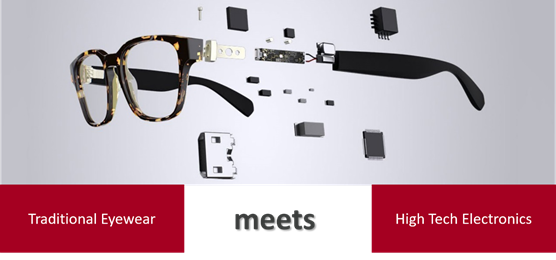
There are two major challenges. First, all of the smart technology and electronics must fit into the format of traditional eyewear, so the AR smart glasses are stylish, lightweight, comfortable (and don’t make you look like a cyborg). Second, the augmented reality display (and other components like eye-tracking cameras and sensors) must be embedded within prescription lenses, because more than 50% of potential users require vision correction. At META, we’re developing ARfusion™, which combines precision cast lens fabrication tools and functional metasurfaces, to provide AR wearable developers with a platform for seamlessly integrating smart technologies into thin lightweight prescription glasses.
In the beginning, a greener approach to corrective lenses
The ARfusion™ system was first developed by a Swiss company, Interglass Technology, as a more sustainable solution to producing prescription lenses, using a fraction of the material and energy compared to conventional processes. The lenses are directly cast into the final correction using a library of more than 2,000 reusable front and back molds. Acrylic monomer is injected between the two halves and cured with UV light in seconds. The halves are automatically separated, and the lens substrate is ready in approximately 1 minute, with no cleaning, polishing or post-production. The ARfusion™ coating process, based on plasma enhanced chemical vapor deposition (PECVD), is environmentally friendly and achieves superior scratch and abrasion resistance without using wet chemistry.
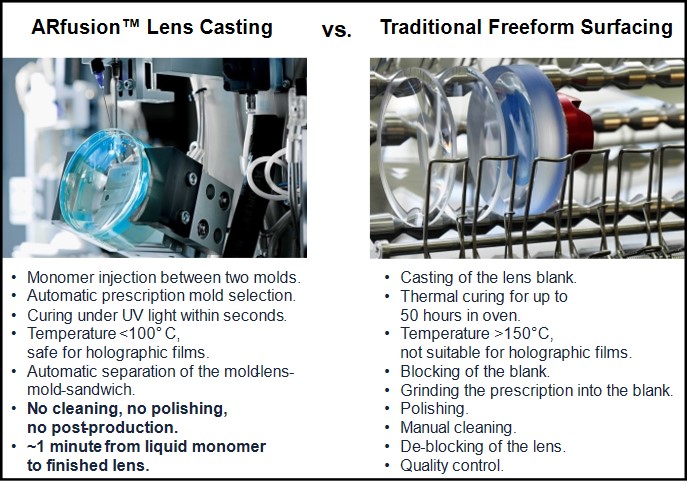
In a traditional cast plastic lens, 80% of the original lens blank material is wasted as the prescription is ground into the blank. With the same amount of material, ARfusion™ can produce five lenses. Grinding the semi-finished blank also requires 50-100 liters of water, which becomes filled with polymeric waste (micro plastic). In a standard thermal process, curing of lens blanks for up to 50 hours requires much more energy and process time compared to ARfusion™.
Goals for AR Smart Glasses
To achieve widespread commercial adoption and ultimately become as ubiquitous as smartphones, AR glasses must be comfortable, affordable, natural looking, and easy to use. A successful solution needs to achieve high-quality images and a large field of view (FOV) in a fashionable, compact form factor, without adding excess weight. This means that the smart technologies (displays, filters, active dimming) must be embedded within a rugged, cast prescription lens.
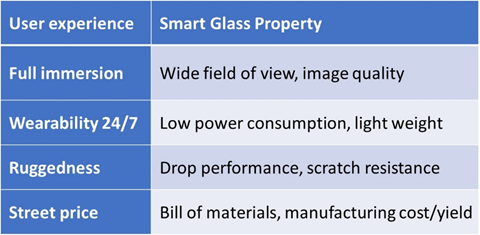
ARfusion™ is Compatible with a Wide Range of Embedded Smart Technologies
The ARfusion process uses low strain thermoforming of functionalized films (such as holographic optical elements). The foils or other components are precisely aligned within the mold cavity. The low temperature (< 100° C) does not damage sensitive films. There is high adhesion of film materials, and components are protected with the final cast lens.

A variety of devices may be embedded within the cast lens, including waveguide and micro-displays, liquid crystal and electrochromic foils, micro-cameras and LEDs, polarized foils, sensor foils, holograms, flex circuits and antennas.
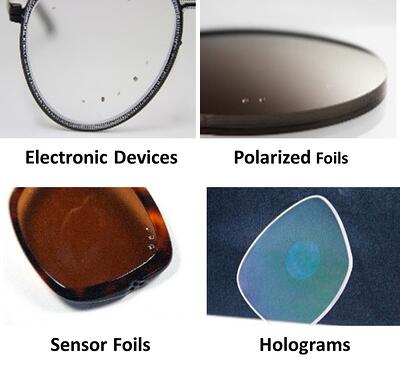
META Has Acquired a Suite of Materials, IP, and Proprietary Equipment for AR Eyewear Production
In 2019, META acquired from North, Inc. the 1st and 2nd generation roll-to-roll holographic manufacturing technology originally developed by Intel for their Vaunt AR glasses. The 2nd generation line is capable of 100,000+ units per month, to support AR (augmented reality) and other holographic products, such as automotive HUD displays, laser glare protection, optical filters, diffractive optics, and other photonic applications. Capacity could be increased to 200,000 units per month with the addition of a second, eight-hour shift.
In November 2020, META signed a multi-year supply deal with Covestro Deutschland AG, which provides early access to new photo-sensitive holographic film materials, the building block of META’s holographic product. This agreement not only allows unprecedented early access to Covestro’s R&D library of photopolymer films but will help accelerate META’s product development and speed of innovation. Target markets include photonics/optical filters and holographic optical elements, diffusers, laser eye protection, optical combiners, and AR (augmented reality) applications.
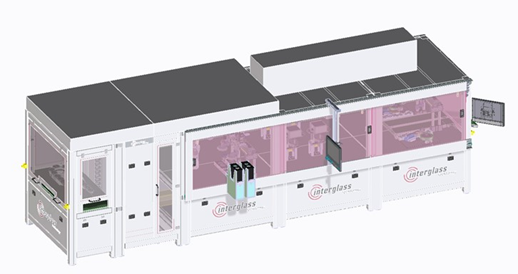
In February 2021, META acquired the assets and IP of Interglass, including second-generation, ALC5 lens casting equipment and related workstations and software, tools, and test equipment, along with intellectual property including patents, trademarks, know-how, technical data, proprietary software, designs, and trade secrets. Interglass has 35 international patents in the field of casting processes for high-quality plastic lenses or other optical components based on UV curing acrylics. In July 2021, META acquired a first-generation, Interglass ALC 4 system, formerly owned by North Inc., in Kitchener, Ontario.
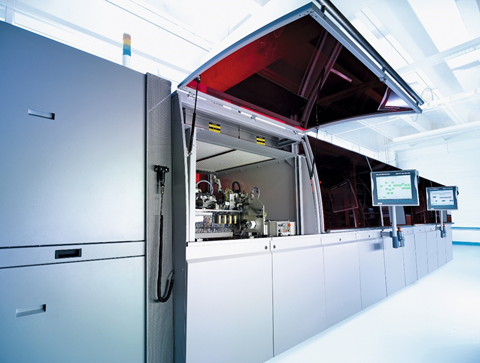
META’s Holographic Optics Capability
META designs and fabricates holographic components that not only replace traditional lenses and mirrors but can provide optical solutions that are smaller, lighter, less expensive, and better tailored to customer needs. All of the optical workings of holographic components are compressed into a thin nanostructured layer of recording material. The most efficient embodiment is a volume holographic grating (VHG).

META stands ready to help AR platform developers meet the challenges of fashionable, functional AR smart glasses. The ARfusion™ platform brings together the two critical elements of embedded smart technology within a lightweight and prescription capable cast lens. Delivering on the vision of augmented reality is a complex engineering task. META brings together a vertical solution encompassing materials, holographic and optics expertise, specialized equipment, and IP.
